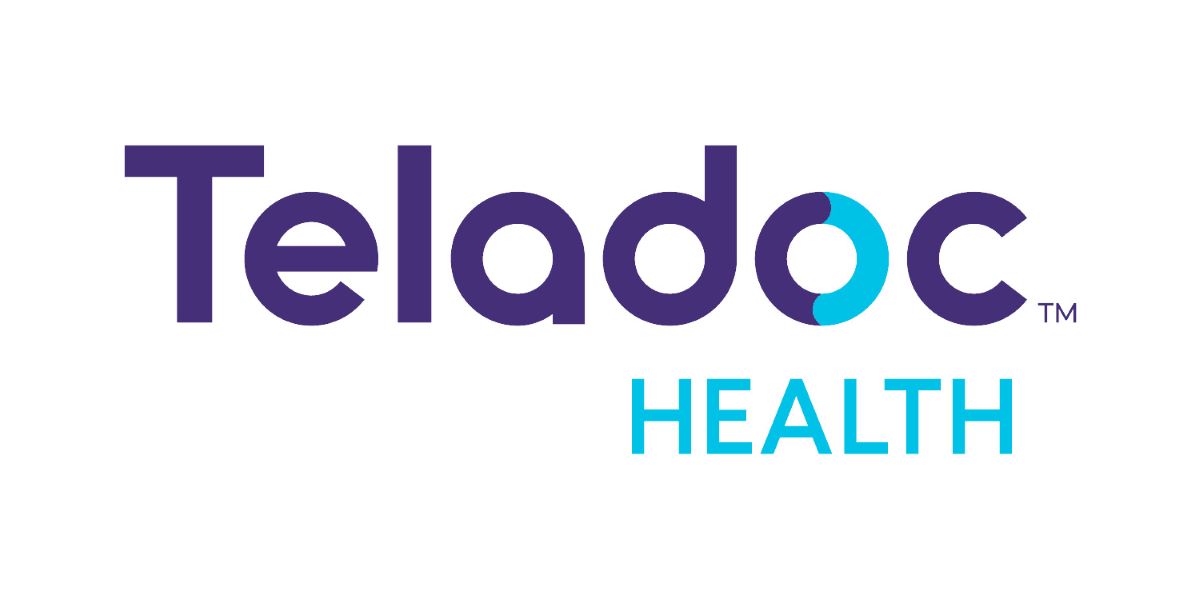Home>Finance>What Insurance Does Summit Medical Group Accept?


Finance
What Insurance Does Summit Medical Group Accept?
Modified: February 21, 2024
Looking to finance your medical expenses? Find out which insurance plans Summit Medical Group accepts and get the coverage you need.
(Many of the links in this article redirect to a specific reviewed product. Your purchase of these products through affiliate links helps to generate commission for LiveWell, at no extra cost. Learn more)
Table of Contents
Introduction
When it comes to choosing a healthcare provider, one of the key factors to consider is whether they accept your insurance. This is especially important when seeking medical services from well-established institutions like Summit Medical Group.
Summit Medical Group is a renowned healthcare organization that serves numerous patients across various specialties. They understand the importance of accessibility and affordability, which is why they work with a wide range of insurance providers. By accepting insurance plans, Summit Medical Group aims to make quality healthcare accessible to as many individuals as possible.
In this article, we will explore the insurance providers accepted by Summit Medical Group. Whether you have private insurance, Medicaid, or Medicare, we will provide you with the necessary information to determine if Summit Medical Group is part of your network.
Understanding the insurance plans accepted by Summit Medical Group is crucial in ensuring that you receive the medical services you need without incurring significant out-of-pocket expenses. We will also provide insights into in-network and out-of-network coverage, as well as the steps to verify your insurance coverage at Summit Medical Group.
So if you’re considering seeking medical care at Summit Medical Group, read on to discover which insurance providers they work with, how to navigate in-network and out-of-network coverage, and how to ensure you are covered for your visit.
Insurance Providers Accepted by Summit Medical Group
Summit Medical Group understands the diverse needs of their patients and strives to provide accessible healthcare services. As a result, they accept a wide range of insurance providers, ensuring that patients can receive the care they need without the added financial burden.
Some of the main insurance providers accepted by Summit Medical Group include:
- Blue Cross Blue Shield
- Aetna
- Cigna
- UnitedHealthcare
- Medicare
- Medicaid
- And many more
This list is not exhaustive, as Summit Medical Group continuously expands its network of accepted insurance providers to accommodate as many patients as possible.
If you have insurance coverage through one of these providers, it is likely that Summit Medical Group is in-network, meaning they have a contractual agreement with your insurance company. Being in-network generally results in lower out-of-pocket costs for patients. It is essential to check the specific details of your insurance plan to confirm coverage.
If your insurance provider is not listed, it doesn’t necessarily mean that you cannot receive care at Summit Medical Group. They also accept out-of-network patients on a case-by-case basis. However, keep in mind that out-of-network services may have different coverage levels and higher out-of-pocket costs.
Before scheduling an appointment, it is advisable to call your insurance provider or Summit Medical Group’s billing department to verify coverage. This will help you understand your financial responsibilities and ensure a smooth healthcare experience.
Summit Medical Group’s commitment to accepting various insurance providers reflects their dedication to providing comprehensive and inclusive healthcare services for all patients. By working with a wide range of insurers, they prioritize accessibility and ensure quality care for individuals from different backgrounds.
Insurance Plans Accepted by Summit Medical Group
Summit Medical Group accepts a variety of insurance plans to accommodate the diverse needs of their patients. Whether you are covered by a private insurance plan, Medicaid, or Medicare, Summit Medical Group strives to provide accessible healthcare services.
Here are some of the common insurance plans accepted by Summit Medical Group:
- Blue Cross Blue Shield: This popular insurance provider offers a range of plans, including Preferred Provider Organization (PPO), Health Maintenance Organization (HMO), and Exclusive Provider Organization (EPO) plans.
- Aetna: Aetna is a widely recognized insurer that offers various plan options, including HMO, PPO, and Health Savings Account (HSA) compatible plans.
- Cigna: Cigna is known for its diverse network of healthcare providers and offers different plan options to meet individual needs, such as Open Access Plus, PPO, and HMO plans.
- UnitedHealthcare: UnitedHealthcare provides a range of plan options, including HMO, PPO, and Point of Service (POS) plans.
- Medicare: Summit Medical Group accepts Medicare, which is a federal health insurance program for individuals aged 65 and older or those with certain disabilities.
- Medicaid: Summit Medical Group also accepts Medicaid, a government-funded insurance program that provides healthcare coverage for low-income individuals and families.
In addition to these insurance plans, Summit Medical Group works with many other providers to ensure that patients have access to comprehensive healthcare services.
It’s important to note that specific insurance plans may have different coverage levels, co-pays, deductibles, and out-of-pocket costs. Before scheduling an appointment at Summit Medical Group, it is recommended to verify your coverage directly with your insurance provider or by contacting Summit Medical Group’s billing department. This will help you understand the extent of your coverage and any potential out-of-pocket expenses.
Summit Medical Group’s commitment to accepting a wide range of insurance plans demonstrates their dedication to providing accessible healthcare services to as many patients as possible. By working with various insurers, they strive to ensure that individuals can receive the care they need without financial hardship.
Understanding In-Network and Out-of-Network Coverage
When it comes to health insurance, understanding the difference between in-network and out-of-network coverage is essential. This knowledge can help you make informed decisions about your healthcare providers and manage your out-of-pocket expenses effectively.
In-network providers are healthcare professionals and facilities that have contracted with your insurance company to provide services at negotiated rates. These providers have agreed to accept the insurance company’s approved fees for services, which helps keep your out-of-pocket costs lower.
Summit Medical Group participates in many insurance networks, making them an in-network provider for numerous insurance plans. If you have an insurance plan that considers Summit Medical Group as an in-network provider, it typically means that your insurance company has established a contract with them. This contract outlines the fees and payment arrangements for the services provided.
On the other hand, out-of-network providers do not have contracts with your insurance company. If you choose to seek care from an out-of-network provider, the payment terms can vary. Out-of-network services may have higher deductibles, co-pays, and co-insurance, resulting in greater out-of-pocket expenses for you.
It’s important to note that some insurance plans offer out-of-network benefits, allowing you to receive partial coverage for services obtained outside of the network. However, these benefits usually come with higher out-of-pocket costs.
Before scheduling an appointment, it’s recommended to check with your insurance company to determine if Summit Medical Group is in-network for your specific plan. This will help you understand your coverage and the associated costs.
If you receive care from an out-of-network provider, it is still possible to submit a claim to your insurance company. However, reimbursement rates may be lower, and you may be responsible for a greater portion of the bill.
Understanding the nuances of in-network and out-of-network coverage can empower you to make informed decisions about your healthcare choices. Verify your coverage and consider the financial implications of choosing an in-network or out-of-network provider when seeking care at Summit Medical Group.
How to Verify Insurance Coverage at Summit Medical Group
One of the crucial steps in ensuring a smooth healthcare experience at Summit Medical Group is verifying your insurance coverage. By taking the time to confirm your coverage, you can avoid unexpected expenses and have a clear understanding of your financial responsibility.
Here are the steps to verify your insurance coverage at Summit Medical Group:
- Contact your insurance provider: Reach out to your insurance company’s customer service department to inquire about Summit Medical Group’s participation in your specific plan. Provide them with the necessary details such as the name of the healthcare provider, their location, and the type of service you require.
- Check Summit Medical Group’s website: Visit Summit Medical Group’s official website and navigate to their insurance and billing section. They often provide a list of accepted insurance providers and instructions on how to verify coverage. Look for any specific instructions or forms you may need to fill out.
- Call Summit Medical Group’s billing department: If you’re unable to find the information you need or have any questions regarding coverage, contact the billing department directly. They have trained professionals who can assist you in verifying your insurance coverage and answering any queries you may have.
- Confirm in-network status: It’s important to confirm whether Summit Medical Group is considered an in-network provider for your insurance plan. This will help you understand the extent of coverage and any potential out-of-pocket expenses.
- Understand your benefits and costs: Once you have verified that Summit Medical Group is in-network, inquire about your benefits and any associated costs. Understand details such as co-pays, deductibles, and co-insurance, which can impact your out-of-pocket expenses.
By taking these steps to verify your insurance coverage at Summit Medical Group, you can ensure a hassle-free experience and avoid any surprises related to payment. It’s always advisable to be proactive and clarify any uncertainties before your appointment.
Remember, insurance coverage can vary depending on factors such as your plan type, geographic location, and specific benefits. Take the time to understand your coverage and seek assistance from both your insurance company and Summit Medical Group to make the most of your healthcare benefits.
Frequently Asked Questions (FAQs)
Here are some commonly asked questions about insurance coverage at Summit Medical Group:
- Does Summit Medical Group accept my insurance plan?
Summit Medical Group works with a wide range of insurance providers. It is recommended to verify your specific plan’s coverage by reaching out to your insurance company or checking Summit Medical Group’s website. - What should I do if Summit Medical Group does not accept my insurance?
Even if Summit Medical Group is not in-network for your insurance plan, they may still accept out-of-network patients. However, it’s important to understand that out-of-network services may result in higher out-of-pocket costs. Contact Summit Medical Group’s billing department to discuss your options. - How can I verify if Summit Medical Group is in-network for my plan?
To verify if Summit Medical Group is in-network, contact your insurance company’s customer service department and provide them with the necessary details. You can also check Summit Medical Group’s official website for a list of accepted insurance providers. - What if I have out-of-network benefits?
If you have out-of-network benefits, you may still be able to receive partial coverage for services obtained at Summit Medical Group. However, it’s important to understand that out-of-network services typically result in higher out-of-pocket costs. Contact your insurance company for more information. - How can I estimate my out-of-pocket expenses?
To estimate your out-of-pocket expenses, contact your insurance provider and inquire about your plan’s benefits, including co-pays, deductibles, and co-insurance. Summit Medical Group’s billing department can also assist you in understanding your financial responsibilities. - What if I have Medicare or Medicaid?
Summit Medical Group accepts both Medicare and Medicaid. If you have either of these government-funded insurance programs, you may be eligible for coverage at Summit Medical Group. Contact your insurance provider for specific details and coverage information.
If you have any further questions or concerns regarding insurance coverage at Summit Medical Group, it’s advisable to contact their billing department directly. They have knowledgeable staff members who can provide personalized assistance and address your specific inquiries.
Remember, understanding your insurance coverage and any associated costs is crucial in managing your healthcare expenses effectively.
Conclusion
Choosing a healthcare provider that accepts your insurance is an important consideration when seeking medical services. Summit Medical Group understands and prioritizes accessibility by accepting a wide range of insurance providers and plans.
In this article, we explored the insurance providers accepted by Summit Medical Group, including popular companies like Blue Cross Blue Shield, Aetna, Cigna, and UnitedHealthcare. Additionally, Summit Medical Group accepts Medicare and Medicaid, ensuring that individuals covered by these government-funded programs can access quality healthcare services.
We also discussed the difference between in-network and out-of-network coverage, emphasizing the importance of confirming Summit Medical Group’s status with your insurance provider. Understanding the benefits and costs associated with in-network and out-of-network services can help you make informed decisions about your healthcare.
In the process of verifying insurance coverage, we provided steps to guide you, including reaching out to your insurance company, checking Summit Medical Group’s website, contacting their billing department, and understanding your benefits and costs. These actions can help you avoid unexpected expenses and ensure a smoother healthcare experience.
Finally, we addressed some frequently asked questions about insurance coverage at Summit Medical Group, providing clarity on topics such as acceptance of specific insurance plans and out-of-network benefits.
In conclusion, Summit Medical Group strives to make quality healthcare accessible to as many patients as possible. By working with numerous insurance providers and accepting various plans, they prioritize inclusivity and affordability. Whether you have private insurance, Medicaid, or Medicare, Summit Medical Group aims to provide comprehensive care while minimizing financial burdens.
As always, it is advisable to verify your specific insurance coverage with both your insurance provider and Summit Medical Group’s billing department to ensure a seamless and cost-effective healthcare journey.
Remember, your health and well-being are priorities, and Summit Medical Group is there to support you on your healthcare journey, regardless of your insurance provider.














